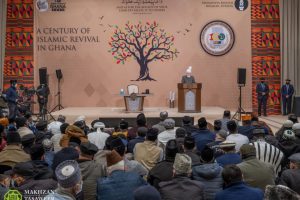
The name Timbuktu conjures up images of ancient adventure and mystery. The ancient city, ideally located in a slight depression in the Sahara Desert, and part of the Keita Kingdom of Mali. This strategic location led Timbuktu to be an ancient trading hub in Mali, where traders (either on camel or over the Niger River) stopped as they carried gold, salt, ivory and various metals and minerals across the continent. [1]
The great Malian king Mansa Musa, who ruled from 1312 to 1337 CE, became famous for his wealth, after performing the Hajj pilgrimage. On his return from Arabia in 1325 CE, he visited Timbuktu via the Niger River, and was escorted by Abu Ishaq As-Sahili, an architect from Granada in Al-Andalus (modern Spain) whom he had met in Makkah. [2]
On the instructions of Mansa Musa, As-Sahili commissioned the new Djinguereber Mosque (also known as the Songhay Great Mosque). This became a distinctive style of its own: made of mud bricks, with wooden poles called toron inserted across the walls that acted as scaffolding to help with repairs and re-plastering of the mud walls that would be needed after the rainy season. As-Sahili commissioned many more mosques across the Malian empire. It was around the same time that the great Moroccan explorer Ibn Battuta visited Timbuktu and the Malian Empire between 1352 to 1354 CE.[3] Although Islam was gaining a foothold in this part of Africa, when Ibn Battuta visited, he recorded that the majority of the population were still pagan at the time.
The mosque itself grew in phases, partly due to reconstruction needed each time Timbuktu faced flooding from the Niger River.[4] The mosque’s iconic style has been adopted elsewhere in the region, including in Ghana and Burkina Faso.
Eventually, the Keita Empire lost its dominance, and Timbuktu was subsumed into the new Songhay Empire. In the coming centuries, the city became famous for the University of Sankore and the many libraries that sprung up, including treasured manuscripts from Toledo and elsewhere following the fall of Al-Andalus. Where the city had been a trading hub for gold and commodities, it now became a centre of religion and learning, and the trade was now in books and manuscripts.[5] The University ran courses in Islam, mathematics, astronomy, law, history and botany. By the 16th century CE, there were 150 Islamic theological schools that attracted students from across the Middle East, Asia, Europe and North Africa. The population of the city is likely to have reached 50,000 people at the time.[6]
Mahmoud Kati records in his book Tahrikh al-Fettach around 1590 CE:
‘In those days Timbuctou did not have its equal…its institutions, its political liberties, the purity of its morals, the security of persons, its consideration and compassion towards foreigners, its courtesy towards students and men of learning and the financial assistance which it provided for the latter; the scholars of the period were the most respected among the believers for their generosity, force of the character and their discretion.’[7]
For many centuries, the name Timbuktu resonated in the Islamic world as a centre of learning, trade and spirituality. The great Djinguereber Mosque was at the heart of this city and was a beacon for scholars, traders and worshippers from across the continent and beyond. The libraries that sprang up around the Mosque and University attracted huge numbers of manuscripts from around the world.
Timbuktu has lost some of its attraction now, and in recent years has also suffered at the hands of extremists including destruction of some of the priceless manuscripts. However, since 2008, a project started to digitise some of the old manuscript collections.[8]
ENDNOTES
[1] Henry Louis Gates Jr, Wonders of the African World (New York, USA: Alfred Knopf, 1999), 137.
[2] P. James Oliver, Mansa Musa and the Empire of Mali (UK: Amazon Books, 2013), 73.
[3] David Nicolle, Historical Atlas of the Islamic World (London, UK: Mercury Books, 2004), 158.
[4] Martin Frishman & Hasan-uddin Khan, The Mosque – History, Architectural Development & Regional Diversity (London, UK: Thames and Hudson, 1994), 183.
[5] P. James Oliver, Mansa Musa and the Empire of Mali (UK: Amazon Books, 2013), 81.
[6] Henry Louis Gates Jr, Wonders of the African World (New York, USA: Alfred Knopf, 1999), 139.
[7] Ibid.
[8] Gertrude Kitongo, “Google Becomes Home to Priceless Timbuktu Manuscripts,” CNN, 2022, Accessed: 11 May 2022. https://edition.cnn.com/2022/05/11/africa/timbuktu-mali-manuscript-digitization-google-spc-intl/index.html




Add Comment